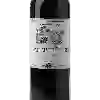
Winery Pascal SuisseBeaujolais
In the mouth this red wine is a with a nice freshness.
This wine generally goes well with pork, poultry or veal.
Taste structure of the Beaujolais from the Winery Pascal Suisse
Light | Bold | |
Smooth | Tannic | |
Dry | Sweet | |
Soft | Acidic |
In the mouth the Beaujolais of Winery Pascal Suisse in the region of Beaujolais is a with a nice freshness.
Food and wine pairings with Beaujolais
Pairings that work perfectly with Beaujolais
Original food and wine pairings with Beaujolais
The Beaujolais of Winery Pascal Suisse matches generally quite well with dishes of pasta, veal or pork such as recipes of flammekueche with munster cheese, roast veal with mustard cream or stuffed potatoes.
Details and technical informations about Winery Pascal Suisse's Beaujolais.
Discover the grape variety: Montils
Montils blanc is a grape variety that originated in France (Charente). It produces a variety of grape specially used for wine making. It is rare to find this grape to eat on our tables. It should be noted that this grape variety can also be used for the elaboration of eaux de vie. This variety of vine is characterized by bunches of medium size, and grapes of medium size. Montils blanc can be found in several vineyards: South-West, Cognac, Bordeaux, Loire Valley, Provence & Corsica, Rhone Valley, Savoie & Bugey, Beaujolais.
Informations about the Winery Pascal Suisse
The Winery Pascal Suisse is one of of the world's greatest estates. It offers 5 wines for sale in the of Beaujolais to come and discover on site or to buy online.
The wine region of Beaujolais
Beaujolais is an important wine region in eastern France, famous for its vibrant, Fruity red wines made from Gamay. It is located immediately South of Burgundy, of which it is sometimes considered a Part, although it is in the administrative region of Rhône. The extensive plantings of Gamay in this region make Beaujolais one of the few regions in the world that is so concentrated on a single Grape variety. Pinot Noir is used in small quantities in red and rosé wines, but in the name of regional identity, it is being phased out and will only be allowed until the 2015 harvest.
The word of the wine: Sour
Said of a wine that is unpleasantly pungent and has a vinegar-like odour.













